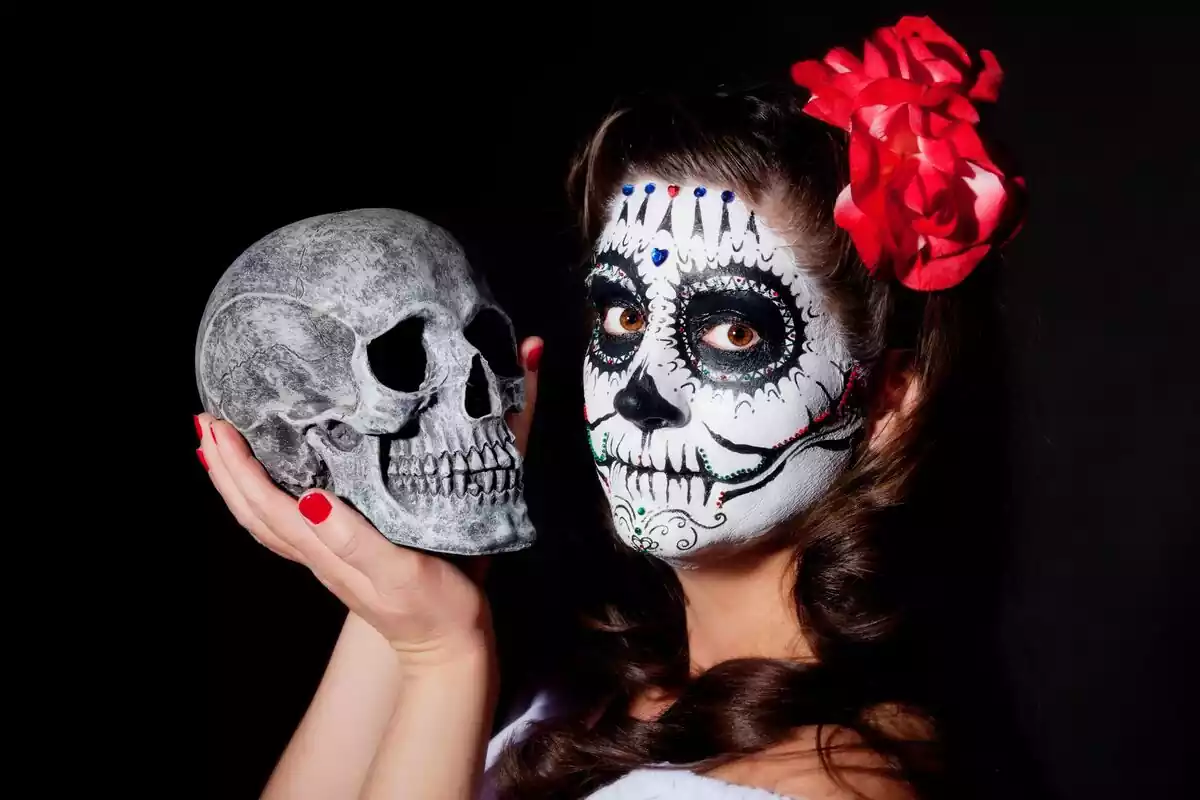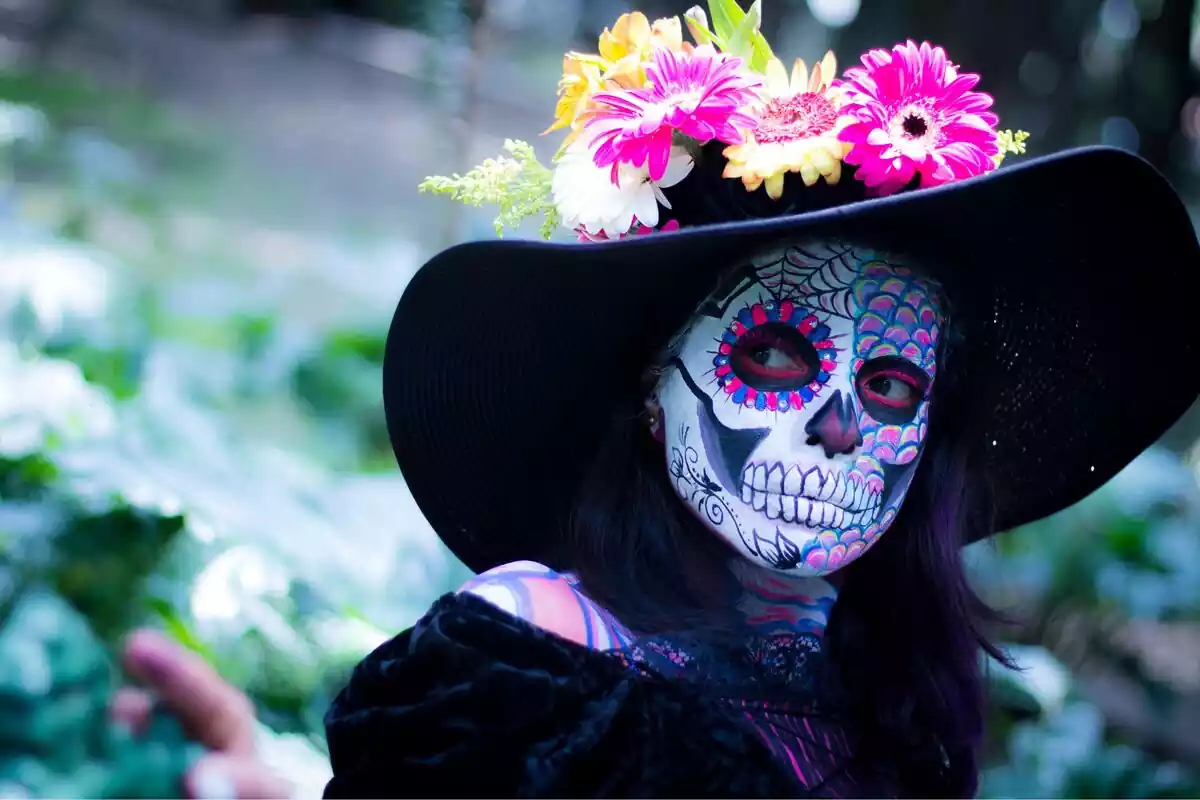Among the many Mexican traditions, the Día de Muertos or Day of the Dead represents an essential celebration in the history of this country. This day is celebrated because of a worship of loved ones, as well as a preservation of ancestral traditions. The most common ofrendas (offerings) are the bread of the dead, flowers and the placement of altars in graves and houses.
In this article, we will talk about the history of this celebration, how it is celebrated, as well as what the most common offerings are in the Day of the Dead.
What is the Day of the Dead?
The Day of the Dead, which is usually celebrated from October 31 to November 2, originated in the colonial era and as a result of religious fusion. It is a very famous and beloved tradition in Mexico in which families honor their deceased for many years.
This celebration is the Mexican version of All Saints Day and All Souls Day, two Catholic celebrations, celebrated on 1 and 2 November, respectively.
As opposed to these traditions, this day includes different traditions that happen from 31 October to 2 November. These traditions consist of offerings, paper figures, skulls, skeletons, coffins and pan de muerto (bread of the dead) that constitute a kind of common rituals for this time of the year.
Regarding its history, a kind of cult of death has been held in Mexico since pre-Columbian times. There were at least 6 types of celebrations dedicated to the dead in the Mexican calendar.
Later it was the colonizers who tried to fuse their Catholic traditions with those of the ancient Mesoamerican peoples. This is why the origins of this celebration date back to before the arrival of the Spaniards.
Other facts
There are records of ancient populations such as the Maya in which rituals were already celebrated, which although they were not the same as the Day of the Dead, were related to this last stage of life.
Afterwards, when the Spaniards got to America, they were the ones who brought All Saints Day with them. It was then when European and prehispanic traditions got mixed, giving rise to this popular Mexican tradition.
As an interesting fact, this celebration was commemorated in 2003 as a Masterpiece of the Oral and Intangible Heritage of Humanity by UNESCO. During this celebration, people also include some humorous verses in which death jokes with living people.
In 2017, the movie Coco was produced by Pixar Animation Studios and released by Walt Disney Pictures. This animated movie is based on the Day of the Dead and many of the Mexican traditions, that we are going to explain in the following lines, are represented in it.
Día de Muertos: a Mexican tradition
The reason for these celebrations is mainly to worship the ancestral Mexican traditions, and it is also a way to honor loved ones who have passed away, showing appreciation for them. This fantastic tradition, which is so important for the Mexican culture, is preserved through artistic offerings.
In addition, this celebration allows families to come closer and get together during these days to receive and honor the souls of those who have already departed this life, as well as to meet again. In the same way, these customs bring a popular enrichment to the tradition of this country and are an essential piece of their nation's identity.
What do they do?
During the days close to the Day of the Dead the tradition is to prepare and eat the favorite food of the deceased in order to provide them with energy since they had to make a very tedious journey from the afterlife.
They also honor the dead by visiting the cemeteries where their bodies rest in peace; decorating and watch over their graves. Also, they prepare altars in their homes so that the souls of the relatives come back during these days.
Domestic offerings are placed inside the house on the family altar. It is said that the dead absorb its aroma. Likewise, the one made at home, as well as the one made in the grave, must be different according to whether it is dedicated to a child or an adult.
1st of November celebration
The 1st of November, the day before the Day of the Dead, they usually put some fruit, pumpkin desserts, rice pudding, tamales, sugar skulls and sweet almonds for the dead children. Later, at 8 o'clock in the evening of the same day, they do the ofrenda to the deceased adults.
In this case, the offerings consist of the production of mole, sauces and other stews with more condiments. They also put liquor, soft drinks, beer or tobacco depending on what the dead liked when they were alive. Outside the house, people put Mexican marigold petals, and they burn copal incense (tree resin) to indicate the dead their way home.
How do they create the altar?
Another tradition is to leave the house doors open so that the spirits of the dead can come back. In the houses, the domestic altar has, from left to right, fruits, the bread of the dead, candles, food and the copal. The deceased person's children, daughters-in-law, grandchildren, and great-grandchildren must be present at the altar.
Once the offerings are on the altar, the family has dinner. They prepare a typical dessert made with pumpkin, they eat the bread of the dead, and they drink the typical punch made with guava, tejocote (Mexican hawthorn) and liquor.
The ofrenda is removed on the 3rd of November and that day the family gets together to eat it. The candles are kept lit for the rest of the month.

Typical ofrendas
Many activities and offerings take place on the Day of the Dead. Among the most common offerings and elements used in these dates so traditional for Mexicans, they include the following activities and elements described below:
1. Pan de muerto (bread of the dead)
The bread of the dead is an essential element on this day, and it's a sweet roll in the shape of a skull and decorated with bones. It's a traditional food specifically for this time of the year.
2. Flowers
Colorful flowers are usually a decorative element on the Day of the Dead, and they put them on the graves and the domestic altars.
They usually use crowns of roses, sunflowers, and Mexican marigolds or tagetes (marigolds) -a yellow Mexican flower that represents the Sun. This is the guide of the souls to their home in the world of the living. Purple candles -specifically 12- are also placed as a sign of mourning.
3. Portraits
The portrait of the person that died is usually set on the highest part of the altar, back to front and in front of a mirror so that the soul of the deceased can also see their relatives and loved ones.
4. Crosses and others
The cross is the Christian representation, and it is usually next to the portrait of the deceased person. This element can be made of salt, ash, soil or lime.
There is also a type of aromatic resin known as copal and incense to clean and purify the environment and/or its energies, thus sanctifying the entire place. The branch or stick of Mexican hawthorns that symbolizes an element used by the deceased to make their way during the trip.
5. Food and drink
The drinks that the family put next to the altar are usually the favorite ones of the dead when they were alive. These are traditionally tequila, pulque, mescal, beers, etc. There is also water in a glass so that the person's soul quenches their thirst after the long journey.
The food is also very important and they usually make traditional Mexican dishes and/or whatever the dead liked.
6. Sugar skulls
Sugar skulls and skeletons of the Day of the Dead are also traditional delicacies during these dates. They are widely sold in all places and especially in local markets. Sometimes the name of the deceased is also written on them.
References
Brandes, S. (2000). El Día de Muertos, el Halloween y la búsqueda de una identidad nacional mexicana. Alteridades, 10 (20), 7-20.
Lagarriga-Attias, I. (2004) La Celebración del Día de Muertos en la Candelaria, Coyoacán. Cuadernos de patrimonio cultural y turismo, 16, 166-175.
